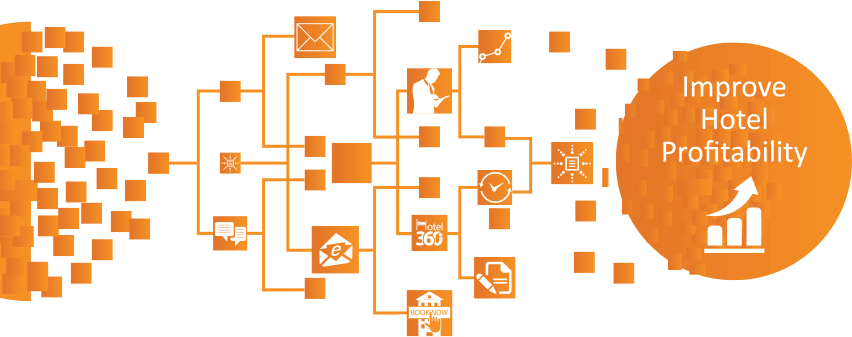
Starwood Hotels & Resorts Worldwide uses an analytics engine to alter hotel price rates on the fly, improving demand forecasting by 20 percent.
Should Marriott International acquire Starwood Hotels & Resorts Worldwide as is widely expected, it will gain a company whose smartphone check-in, key-less entry and robot bellhops are progressive in the increasingly technology-focused hospitality sector. But Starwood’s digital crown jewel is invisible to guests: Its analytics software platform enables the hotelier to automatically recalibrate price of its properties using hundreds of variables that influence supply and demand.
Starwood spent more than $50 million over three years on this revenue optimization system, or ROS as the company calls it, which has helped the chain improve demand forecasting by 20 percent since 2015, says David Flueck, Starwood’s vice president of global revenue. As ROS “learns” it will price rooms more efficiently, ideally boosting revenues and profitability. “What we’re trying to do within our industry space is to say: How do we exploit access to data to create a more robust capability?” says Starwood CIO Martha Poulter.
Dynamic pricing has long served as the chief function of revenue management systems operated by airline and rental car industries, as well as the hospitality industry. For example, Marriott, Hilton and Intercontinental Hotels Group adjusted rates one or two times a day as far back as 2003. Thanks to advances in high-performance computing and analytics software, pricing now changes from minute to minute. If you’ve shopped online and noticed changes such as higher or lower rates (or suddenly no availability) after you refreshed your browser, you’ve seen dynamic pricing at work. Marriott’s system, called Marsha, displays rates based on how long someone will be staying, in which market they’ll be staying and when they’re staying.
Dynamic pricing includes ‘man and machine’ approach
ROS works similarly. As you click through your options on an online reservation system, ROS is performing a dizzying number of calculations behind the scenes in Starwood’s data center. It is cross-checking past and present reservation data, booking pattern data, cancellation data, occupancy data, room type, daily rate data, as well as transient or group status (whether you’re a solo traveler blowing into Manhattan for a couple of days or a gang of 100 coming in for a convention). ROS also analyzes external data, such as competitive pricing data, weather and climate data, and booking patterns on other sites.
Read rest of the article at CIO




